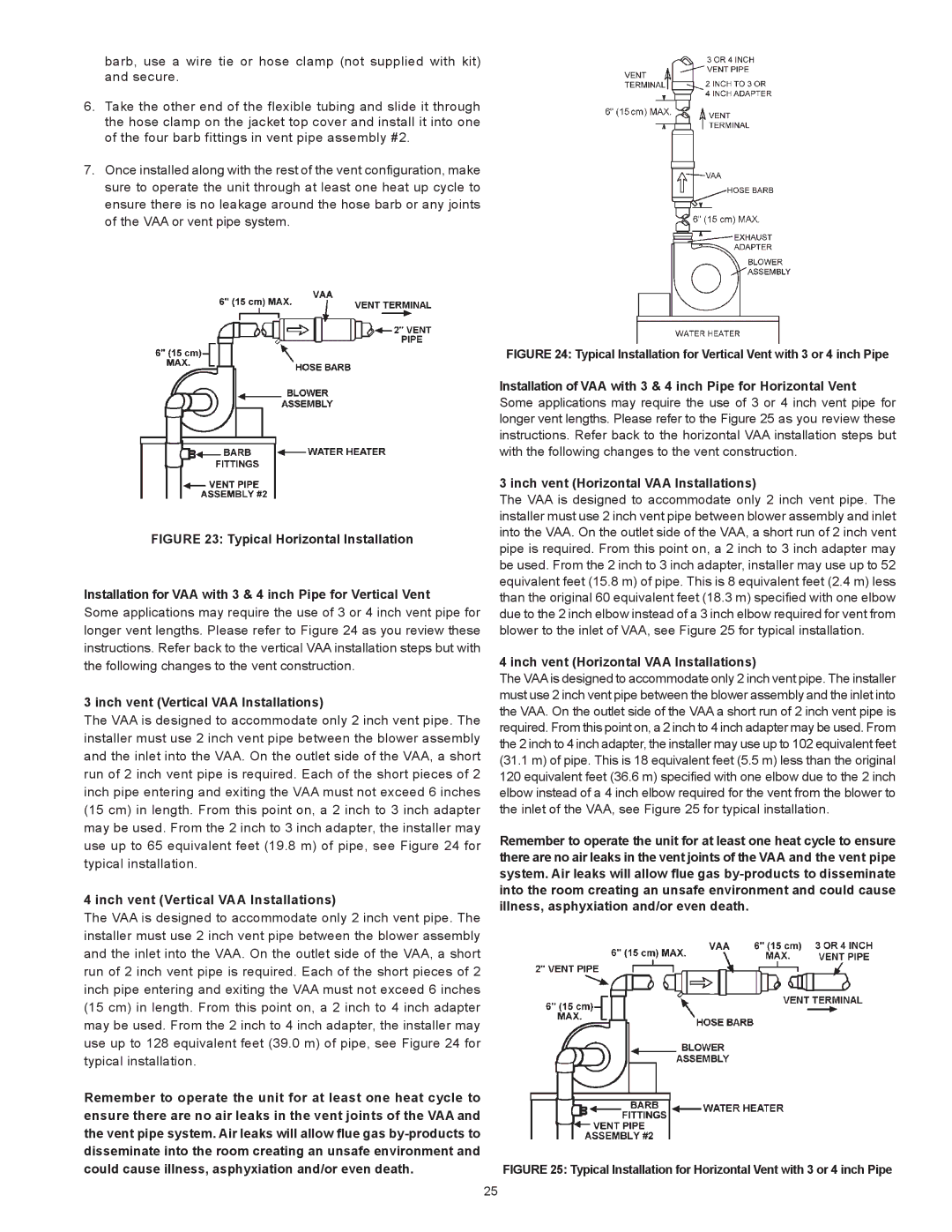317686-000, 6 50YTVIT SERIES 100 specifications
The Reliance Water Heaters 6 50YTVIT Series is a top-performing line of electric water heaters designed to deliver reliable hot water for residential needs. This model, identified by the part number 100,317686-000, showcases exceptional efficiency and innovative features that make it a popular choice among homeowners.One of the standout characteristics of the 6 50YTVIT is its 50-gallon capacity, providing ample hot water to meet the demands of larger households. The tank is constructed from durable materials to ensure longevity, featuring a glass-lined interior that helps resist corrosion, extending the lifespan of the unit.
An important feature of this water heater is its energy efficiency. It is built with a high-efficiency heating element that reduces energy consumption, ultimately leading to lower utility bills. The unit also has an ENERGY STAR® certification, indicating it meets strict energy efficiency guidelines set by the Environmental Protection Agency. This makes it not only an eco-friendly choice but also a cost-effective one.
The Reliance 6 50YTVIT is equipped with advanced safety mechanisms, including a combination temperature and pressure relief valve, which protects the unit from overheating or excessive pressure build-up. This ensures safe operation, providing peace of mind for users.
Installation and maintenance are made easier with the thoughtful design of this water heater. Its lightweight construction facilitates hassle-free handling and installation, even in tighter spaces. Additionally, the unit is designed for easy access to the heating elements for maintenance, helping to reduce downtime and cost.
Technologically, this water heater adopts a versatile voltage system, making it compatible with a wide range of electrical supplies. It can operate effectively in various home settings, enhancing its adaptability.
In conclusion, the Reliance Water Heaters 6 50YTVIT Series 100,317686-000 stands out for its robust capacity, energy efficiency, and safety features. Its dependable performance and ease of maintenance make it an ideal choice for homeowners looking for a reliable water heating solution that ensures comfort and convenience in daily life. With its thoughtful design and competitive features, the Reliance 6 50YTVIT series continues to be a preferred selection in modern home water heating applications.

